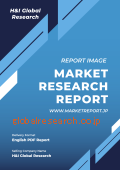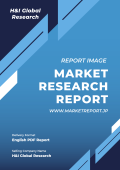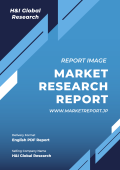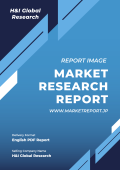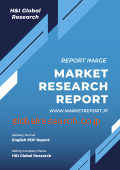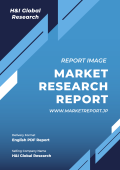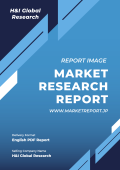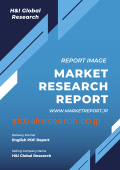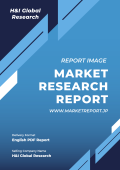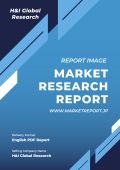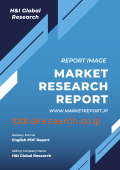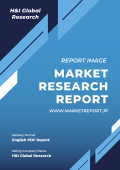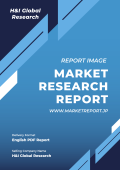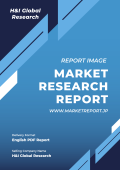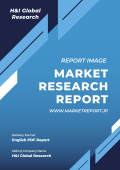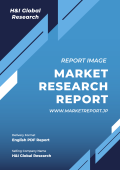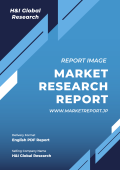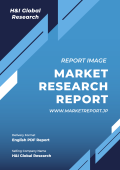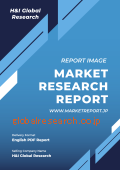| ■ 英語タイトル:Eye Care Surgical Market Report by Product (Implants and Stents, Laser Surgery Device, Phacoemulsification Equipment, Viscoelastics), Application (Cataract Surgery, Oculoplastic Surgery, Vitreo-Retinal Surgery, Corneal Surgery, Refractive Surgery, Glaucoma Surgery, and Others), End User (Hospitals, Ophthalmology Clinics, Eye Research Institutes, Ambulatory Surgical Centers), and Region 2023-2028
|
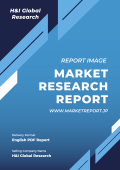 | ■ 発行会社/調査会社:IMARC
■ 商品コード:IMARC23JLY176
■ 発行日:2023年7月
■ 調査対象地域:グローバル
■ 産業分野:医療
■ ページ数:135
■ レポート言語:英語
■ レポート形式:PDF
■ 納品方式:Eメール
|
■ 販売価格オプション
(消費税別)
※販売価格オプションの説明はこちらで、ご購入に関する詳細案内はご利用ガイドでご確認いただけます。
※お支払金額は「換算金額(日本円)+消費税+配送料(Eメール納品は無料)」です。
※Eメールによる納品の場合、通常ご注文当日~2日以内に納品致します。
※レポート納品後、納品日+5日以内に請求書を発行・送付致します。(請求書発行日より2ヶ月以内の銀行振込条件、カード払いも可能)
※IMARC社の概要及び新刊レポートはこちらでご確認いただけます。
*** レポート概要(サマリー)***IMARC社は、2022年62.4億ドルであった世界の眼科手術市場規模が、予測期間中(2023年~2028年)年平均5.5%成長し、2028年には85.6億ドルに達すると予測しています。当調査資料では、眼科手術の世界市場を調査・分析し、序論、範囲・調査手法、エグゼクティブサマリー、イントロダクション、製品別(インプラント&ステント、レーザー手術装置、乳化吸引装置、ビスコエラストマー)分析、用途別(白内障手術、眼形成手術、網膜硝子体手術、角膜手術、その他)分析、エンドユーザー別(病院、眼科クリニック、眼科研究機関、外来手術センター)分析、地域別(北米、アジア太平洋、ヨーロッパ、中南米、中東/アフリカ)分析、推進要因・阻害要因・機会、バリューチェーン分析、ファイブフォース分析、価格分析、競争状況などの項目を掲載しています。なお、当市場の主要企業には、Alcon Inc.、Bausch + Lomb (Bausch Health Companies Inc.)、BVI Holding Limited、Carl Zeiss Meditec AG (Carl Zeiss AG)、Glaukos Corporation、iSTAR Medical、Lumenis Be Ltd.、Nidek Co. Ltd.、Sight Sciences、Ziemer Ophthalmic Systems AGなどが含まれています。
・序論
・範囲・調査手法
・エグゼクティブサマリー
・イントロダクション
・世界の眼科手術市場規模:製品別
- インプラント&ステントの市場規模
- レーザー手術装置の市場規模
- 乳化吸引装置の市場規模
- ビスコエラストマーの市場規模
・世界の眼科手術市場規模:用途別
- 白内障手術における市場規模
- 眼形成手術における市場規模
- 網膜硝子体手術における市場規模
- 角膜手術における市場規模
- その他用途における市場規模
・世界の眼科手術市場規模:エンドユーザー別
- 病院における市場規模
- 眼科クリニックにおける市場規模
- 眼科研究機関における市場規模
- 外来手術センターにおける市場規模
・世界の眼科手術市場規模:地域別
- 北米の眼科手術市場規模
- アジア太平洋の眼科手術市場規模
- ヨーロッパの眼科手術市場規模
- 中南米の眼科手術市場規模
- 中東/アフリカの眼科手術市場規模
・推進要因・阻害要因・機会
・バリューチェーン分析
・ファイブフォース分析
・価格分析
・競争状況 |
Market Overview:
The global eye care surgical market size reached US$ 6.24 Billion in 2022. Looking forward, IMARC Group expects the market to reach US$ 8.56 Billion by 2028, exhibiting a growth rate (CAGR) of 5.50% during 2023-2028. The rising aging population, growing incidence of eye diseases, increasing awareness and access to healthcare, constant lifestyle changes, and stringent government initiatives and insurance coverage schemes represent some of the key factors driving the market.
Eye care surgical refers to a branch of medicine that focuses on surgical procedures aimed at diagnosing, treating, and correcting various conditions and diseases affecting the eyes. It encompasses a wide range of surgical interventions performed by ophthalmologists, specialized medical professionals who specialize in eye care. Eye care surgical procedures can address a multitude of conditions, including cataracts, glaucoma, refractive errors (such as nearsightedness, farsightedness, and astigmatism), corneal disorders, retinal diseases, and eye injuries. Some commonly performed eye care surgical procedures include cataract surgery, which involves the removal of the cloudy lens and implantation of an artificial lens; laser refractive surgery, such as LASIK or PRK, which reshapes the cornea to correct refractive errors; glaucoma surgery, which aims to reduce intraocular pressure to prevent optic nerve damage; and retinal surgery, which repairs retinal detachments, macular holes, or diabetic retinopathy. The use of precision instruments, lasers, and microsurgical techniques has improved surgical outcomes, reduced complications, and shortened recovery times. Eye care surgical procedures are typically performed in specialized surgical centers or hospitals with dedicated ophthalmology departments. The procedures require highly skilled ophthalmic surgeons who undergo extensive training and possess expertise in specific surgical techniques.
Eye Care Surgical Market Trends:
One of the primary factors driving the market is the increase in the elderly population, leading to a higher prevalence of age-related eye conditions, such as cataracts, glaucoma, and macular degeneration, as these conditions often require surgical intervention for treatment and vision restoration. Additionally, the growing incidence of eye diseases also drives the need for surgical interventions to prevent vision loss and maintain or improve visual function. Other than this, the rising awareness about eye health and play a vital role in accelerating the adoption of eye care surgical procedures. Efforts to educate the public about eye diseases, regular eye examinations, and the effectiveness of surgical treatments have contributed to increased patient awareness and acceptance of surgical interventions. Apart from this, the development of minimally invasive techniques, such as small incision cataract surgery and minimally invasive glaucoma surgery, has allowed for faster healing and improved patient comfort. Moreover, improved access to healthcare facilities, particularly in emerging economies, has led to greater availability of eye care surgical services, further driving market growth. Furthermore, modern lifestyles characterized by increased digital device usage, prolonged screen time, and exposure to environmental factors such as pollution and ultraviolet radiation also impact eye health. These factors have contributed to the development of eye conditions, including dry eye syndrome and refractive errors, which may require surgical intervention for effective treatment and correction.
Key Market Segmentation:
IMARC Group provides an analysis of the key trends in each segment of the global eye care surgical market, along with forecasts at the global, regional, and country levels from 2023-2028. Our report has categorized the market based on the product, application, and end user.
Product Insights:
Implants and Stents
Laser Surgery Device
Phacoemulsification Equipment
Viscoelastics
The report has provided a detailed breakup and analysis of the eye care surgical market based on the product. This includes Implants and stents, laser surgery device, phacoemulsification equipment and viscoelastics. According to the report, implants and stents represented the largest segment.
Application Insights:
Cataract Surgery
Oculoplastic Surgery
Vitreo-Retinal Surgery
Corneal Surgery
Refractive Surgery
Glaucoma Surgery
Others
A detailed breakup and analysis of the eye care surgical market based on the application has also been provided in the report. This includes cataract surgery, oculoplastic surgery, vitreo-retinal surgery, corneal surgery, refractive surgery, glaucoma surgery, and others. According to the report, cataract surgery accounted for the largest market share.
End User Insights:
Hospitals
Ophthalmology Clinics
Eye Research Institutes
Ambulatory Surgical Centers
A detailed breakup and analysis of the eye care surgical market based on the end user has also been provided in the report. This includes hospitals, ophthalmology clinics, eye research institutes, and ambulatory surgical centers. According to the report, hospitals accounted for the largest market share.
Regional Insights:
North America
United States
Canada
Europe
Germany
France
United Kingdom
Italy
Spain
Russia
Others
Asia Pacific
China
Japan
India
South Korea
Australia
Indonesia
Others
Latin America
Brazil
Mexico
Others
Middle East and Africa
The report has also provided a comprehensive analysis of all the major regional markets, which include North America (the United States and Canada); Europe (Germany, France, the United Kingdom, Italy, Spain, Russia, and others); Asia Pacific (China, Japan, India, South Korea, Australia, Indonesia, and others); Latin America (Brazil, Mexico, and others); and the Middle East and Africa. According to the report, North America was the largest market for eye care surgical market . Some of the factors driving the North America eye care surgical market included aging population and prevalence of eye disorders, technological advancements in surgical techniques and equipment, increasing focus on vision correction and aesthetic procedures, etc.
Competitive Landscape:
The report has also provided a comprehensive analysis of the competitive landscape in the global eye care surgical market. Detailed profiles of all major companies have been provided. Some of the companies covered include Alcon Inc., Bausch + Lomb (Bausch Health Companies Inc.), BVI Holding Limited, Carl Zeiss Meditec AG (Carl Zeiss AG), Glaukos Corporation, iSTAR Medical, Lumenis Be Ltd., Nidek Co. Ltd., Sight Sciences, Ziemer Ophthalmic Systems AG, etc. Kindly note that this only represents a partial list of companies, and the complete list has been provided in the report.
Market Overview:
The global eye care surgical market size reached US$ 6.24 Billion in 2022. Looking forward, IMARC Group expects the market to reach US$ 8.56 Billion by 2028, exhibiting a growth rate (CAGR) of 5.50% during 2023-2028. The rising aging population, growing incidence of eye diseases, increasing awareness and access to healthcare, constant lifestyle changes, and stringent government initiatives and insurance coverage schemes represent some of the key factors driving the market.
Eye care surgical refers to a branch of medicine that focuses on surgical procedures aimed at diagnosing, treating, and correcting various conditions and diseases affecting the eyes. It encompasses a wide range of surgical interventions performed by ophthalmologists, specialized medical professionals who specialize in eye care. Eye care surgical procedures can address a multitude of conditions, including cataracts, glaucoma, refractive errors (such as nearsightedness, farsightedness, and astigmatism), corneal disorders, retinal diseases, and eye injuries. Some commonly performed eye care surgical procedures include cataract surgery, which involves the removal of the cloudy lens and implantation of an artificial lens; laser refractive surgery, such as LASIK or PRK, which reshapes the cornea to correct refractive errors; glaucoma surgery, which aims to reduce intraocular pressure to prevent optic nerve damage; and retinal surgery, which repairs retinal detachments, macular holes, or diabetic retinopathy. The use of precision instruments, lasers, and microsurgical techniques has improved surgical outcomes, reduced complications, and shortened recovery times. Eye care surgical procedures are typically performed in specialized surgical centers or hospitals with dedicated ophthalmology departments. The procedures require highly skilled ophthalmic surgeons who undergo extensive training and possess expertise in specific surgical techniques.
Eye Care Surgical Market Trends:
One of the primary factors driving the market is the increase in the elderly population, leading to a higher prevalence of age-related eye conditions, such as cataracts, glaucoma, and macular degeneration, as these conditions often require surgical intervention for treatment and vision restoration. Additionally, the growing incidence of eye diseases also drives the need for surgical interventions to prevent vision loss and maintain or improve visual function. Other than this, the rising awareness about eye health and play a vital role in accelerating the adoption of eye care surgical procedures. Efforts to educate the public about eye diseases, regular eye examinations, and the effectiveness of surgical treatments have contributed to increased patient awareness and acceptance of surgical interventions. Apart from this, the development of minimally invasive techniques, such as small incision cataract surgery and minimally invasive glaucoma surgery, has allowed for faster healing and improved patient comfort. Moreover, improved access to healthcare facilities, particularly in emerging economies, has led to greater availability of eye care surgical services, further driving market growth. Furthermore, modern lifestyles characterized by increased digital device usage, prolonged screen time, and exposure to environmental factors such as pollution and ultraviolet radiation also impact eye health. These factors have contributed to the development of eye conditions, including dry eye syndrome and refractive errors, which may require surgical intervention for effective treatment and correction.
Key Market Segmentation:
IMARC Group provides an analysis of the key trends in each segment of the global eye care surgical market, along with forecasts at the global, regional, and country levels from 2023-2028. Our report has categorized the market based on the product, application, and end user.
Product Insights:
Implants and Stents
Laser Surgery Device
Phacoemulsification Equipment
Viscoelastics
The report has provided a detailed breakup and analysis of the eye care surgical market based on the product. This includes Implants and stents, laser surgery device, phacoemulsification equipment and viscoelastics. According to the report, implants and stents represented the largest segment.
Application Insights:
Cataract Surgery
Oculoplastic Surgery
Vitreo-Retinal Surgery
Corneal Surgery
Refractive Surgery
Glaucoma Surgery
Others
A detailed breakup and analysis of the eye care surgical market based on the application has also been provided in the report. This includes cataract surgery, oculoplastic surgery, vitreo-retinal surgery, corneal surgery, refractive surgery, glaucoma surgery, and others. According to the report, cataract surgery accounted for the largest market share.
End User Insights:
Hospitals
Ophthalmology Clinics
Eye Research Institutes
Ambulatory Surgical Centers
A detailed breakup and analysis of the eye care surgical market based on the end user has also been provided in the report. This includes hospitals, ophthalmology clinics, eye research institutes, and ambulatory surgical centers. According to the report, hospitals accounted for the largest market share.
Regional Insights:
North America
United States
Canada
Europe
Germany
France
United Kingdom
Italy
Spain
Russia
Others
Asia Pacific
China
Japan
India
South Korea
Australia
Indonesia
Others
Latin America
Brazil
Mexico
Others
Middle East and Africa
The report has also provided a comprehensive analysis of all the major regional markets, which include North America (the United States and Canada); Europe (Germany, France, the United Kingdom, Italy, Spain, Russia, and others); Asia Pacific (China, Japan, India, South Korea, Australia, Indonesia, and others); Latin America (Brazil, Mexico, and others); and the Middle East and Africa. According to the report, North America was the largest market for eye care surgical market . Some of the factors driving the North America eye care surgical market included aging population and prevalence of eye disorders, technological advancements in surgical techniques and equipment, increasing focus on vision correction and aesthetic procedures, etc.
Competitive Landscape:
The report has also provided a comprehensive analysis of the competitive landscape in the global eye care surgical market. Detailed profiles of all major companies have been provided. Some of the companies covered include Alcon Inc., Bausch + Lomb (Bausch Health Companies Inc.), BVI Holding Limited, Carl Zeiss Meditec AG (Carl Zeiss AG), Glaukos Corporation, iSTAR Medical, Lumenis Be Ltd., Nidek Co. Ltd., Sight Sciences, Ziemer Ophthalmic Systems AG, etc. Kindly note that this only represents a partial list of companies, and the complete list has been provided in the report.
Key Questions Answered in This Report:
How has the global eye care surgical market performed so far, and how will it perform in the coming years?
What are the drivers, restraints, and opportunities in the global eye care surgical market?
What is the impact of each driver, restraint, and opportunity on the global eye care surgical market?
What are the key regional markets?
Which countries represent the most attractive eye care surgical market?
What is the breakup of the market based on the product?
Which is the most attractive product in the eye care surgical market?
What is the breakup of the market based on the application?
Which is the most attractive application in the eye care surgical market?
What is the breakup of the market based on the end user?
Which is the most attractive end user in the eye care surgical market?
What is the competitive structure of the global eye care surgical market?
Who are the key players/companies in the global eye care surgical market?
Market Overview:
The global eye care surgical market size reached US$ 6.24 Billion in 2022. Looking forward, IMARC Group expects the market to reach US$ 8.56 Billion by 2028, exhibiting a growth rate (CAGR) of 5.50% during 2023-2028. The rising aging population, growing incidence of eye diseases, increasing awareness and access to healthcare, constant lifestyle changes, and stringent government initiatives and insurance coverage schemes represent some of the key factors driving the market.
Eye care surgical refers to a branch of medicine that focuses on surgical procedures aimed at diagnosing, treating, and correcting various conditions and diseases affecting the eyes. It encompasses a wide range of surgical interventions performed by ophthalmologists, specialized medical professionals who specialize in eye care. Eye care surgical procedures can address a multitude of conditions, including cataracts, glaucoma, refractive errors (such as nearsightedness, farsightedness, and astigmatism), corneal disorders, retinal diseases, and eye injuries. Some commonly performed eye care surgical procedures include cataract surgery, which involves the removal of the cloudy lens and implantation of an artificial lens; laser refractive surgery, such as LASIK or PRK, which reshapes the cornea to correct refractive errors; glaucoma surgery, which aims to reduce intraocular pressure to prevent optic nerve damage; and retinal surgery, which repairs retinal detachments, macular holes, or diabetic retinopathy. The use of precision instruments, lasers, and microsurgical techniques has improved surgical outcomes, reduced complications, and shortened recovery times. Eye care surgical procedures are typically performed in specialized surgical centers or hospitals with dedicated ophthalmology departments. The procedures require highly skilled ophthalmic surgeons who undergo extensive training and possess expertise in specific surgical techniques.
Eye Care Surgical Market Trends:
One of the primary factors driving the market is the increase in the elderly population, leading to a higher prevalence of age-related eye conditions, such as cataracts, glaucoma, and macular degeneration, as these conditions often require surgical intervention for treatment and vision restoration. Additionally, the growing incidence of eye diseases also drives the need for surgical interventions to prevent vision loss and maintain or improve visual function. Other than this, the rising awareness about eye health and play a vital role in accelerating the adoption of eye care surgical procedures. Efforts to educate the public about eye diseases, regular eye examinations, and the effectiveness of surgical treatments have contributed to increased patient awareness and acceptance of surgical interventions. Apart from this, the development of minimally invasive techniques, such as small incision cataract surgery and minimally invasive glaucoma surgery, has allowed for faster healing and improved patient comfort. Moreover, improved access to healthcare facilities, particularly in emerging economies, has led to greater availability of eye care surgical services, further driving market growth. Furthermore, modern lifestyles characterized by increased digital device usage, prolonged screen time, and exposure to environmental factors such as pollution and ultraviolet radiation also impact eye health. These factors have contributed to the development of eye conditions, including dry eye syndrome and refractive errors, which may require surgical intervention for effective treatment and correction.
Key Market Segmentation:
IMARC Group provides an analysis of the key trends in each segment of the global eye care surgical market, along with forecasts at the global, regional, and country levels from 2023-2028. Our report has categorized the market based on the product, application, and end user.
Product Insights:
Implants and Stents
Laser Surgery Device
Phacoemulsification Equipment
Viscoelastics
The report has provided a detailed breakup and analysis of the eye care surgical market based on the product. This includes Implants and stents, laser surgery device, phacoemulsification equipment and viscoelastics. According to the report, implants and stents represented the largest segment.
Application Insights:
Cataract Surgery
Oculoplastic Surgery
Vitreo-Retinal Surgery
Corneal Surgery
Refractive Surgery
Glaucoma Surgery
Others
A detailed breakup and analysis of the eye care surgical market based on the application has also been provided in the report. This includes cataract surgery, oculoplastic surgery, vitreo-retinal surgery, corneal surgery, refractive surgery, glaucoma surgery, and others. According to the report, cataract surgery accounted for the largest market share.
End User Insights:
Hospitals
Ophthalmology Clinics
Eye Research Institutes
Ambulatory Surgical Centers
A detailed breakup and analysis of the eye care surgical market based on the end user has also been provided in the report. This includes hospitals, ophthalmology clinics, eye research institutes, and ambulatory surgical centers. According to the report, hospitals accounted for the largest market share.
Regional Insights:
North America
United States
Canada
Europe
Germany
France
United Kingdom
Italy
Spain
Russia
Others
Asia Pacific
China
Japan
India
South Korea
Australia
Indonesia
Others
Latin America
Brazil
Mexico
Others
Middle East and Africa
The report has also provided a comprehensive analysis of all the major regional markets, which include North America (the United States and Canada); Europe (Germany, France, the United Kingdom, Italy, Spain, Russia, and others); Asia Pacific (China, Japan, India, South Korea, Australia, Indonesia, and others); Latin America (Brazil, Mexico, and others); and the Middle East and Africa. According to the report, North America was the largest market for eye care surgical market . Some of the factors driving the North America eye care surgical market included aging population and prevalence of eye disorders, technological advancements in surgical techniques and equipment, increasing focus on vision correction and aesthetic procedures, etc.
Competitive Landscape:
The report has also provided a comprehensive analysis of the competitive landscape in the global eye care surgical market. Detailed profiles of all major companies have been provided. Some of the companies covered include Alcon Inc., Bausch + Lomb (Bausch Health Companies Inc.), BVI Holding Limited, Carl Zeiss Meditec AG (Carl Zeiss AG), Glaukos Corporation, iSTAR Medical, Lumenis Be Ltd., Nidek Co. Ltd., Sight Sciences, Ziemer Ophthalmic Systems AG, etc. Kindly note that this only represents a partial list of companies, and the complete list has been provided in the report.
Market Overview:
The global eye care surgical market size reached US$ 6.24 Billion in 2022. Looking forward, IMARC Group expects the market to reach US$ 8.56 Billion by 2028, exhibiting a growth rate (CAGR) of 5.50% during 2023-2028. The rising aging population, growing incidence of eye diseases, increasing awareness and access to healthcare, constant lifestyle changes, and stringent government initiatives and insurance coverage schemes represent some of the key factors driving the market.
Eye care surgical refers to a branch of medicine that focuses on surgical procedures aimed at diagnosing, treating, and correcting various conditions and diseases affecting the eyes. It encompasses a wide range of surgical interventions performed by ophthalmologists, specialized medical professionals who specialize in eye care. Eye care surgical procedures can address a multitude of conditions, including cataracts, glaucoma, refractive errors (such as nearsightedness, farsightedness, and astigmatism), corneal disorders, retinal diseases, and eye injuries. Some commonly performed eye care surgical procedures include cataract surgery, which involves the removal of the cloudy lens and implantation of an artificial lens; laser refractive surgery, such as LASIK or PRK, which reshapes the cornea to correct refractive errors; glaucoma surgery, which aims to reduce intraocular pressure to prevent optic nerve damage; and retinal surgery, which repairs retinal detachments, macular holes, or diabetic retinopathy. The use of precision instruments, lasers, and microsurgical techniques has improved surgical outcomes, reduced complications, and shortened recovery times. Eye care surgical procedures are typically performed in specialized surgical centers or hospitals with dedicated ophthalmology departments. The procedures require highly skilled ophthalmic surgeons who undergo extensive training and possess expertise in specific surgical techniques.
Eye Care Surgical Market Trends:
One of the primary factors driving the market is the increase in the elderly population, leading to a higher prevalence of age-related eye conditions, such as cataracts, glaucoma, and macular degeneration, as these conditions often require surgical intervention for treatment and vision restoration. Additionally, the growing incidence of eye diseases also drives the need for surgical interventions to prevent vision loss and maintain or improve visual function. Other than this, the rising awareness about eye health and play a vital role in accelerating the adoption of eye care surgical procedures. Efforts to educate the public about eye diseases, regular eye examinations, and the effectiveness of surgical treatments have contributed to increased patient awareness and acceptance of surgical interventions. Apart from this, the development of minimally invasive techniques, such as small incision cataract surgery and minimally invasive glaucoma surgery, has allowed for faster healing and improved patient comfort. Moreover, improved access to healthcare facilities, particularly in emerging economies, has led to greater availability of eye care surgical services, further driving market growth. Furthermore, modern lifestyles characterized by increased digital device usage, prolonged screen time, and exposure to environmental factors such as pollution and ultraviolet radiation also impact eye health. These factors have contributed to the development of eye conditions, including dry eye syndrome and refractive errors, which may require surgical intervention for effective treatment and correction.
Key Market Segmentation:
IMARC Group provides an analysis of the key trends in each segment of the global eye care surgical market, along with forecasts at the global, regional, and country levels from 2023-2028. Our report has categorized the market based on the product, application, and end user.
Product Insights:
Implants and Stents
Laser Surgery Device
Phacoemulsification Equipment
Viscoelastics
The report has provided a detailed breakup and analysis of the eye care surgical market based on the product. This includes Implants and stents, laser surgery device, phacoemulsification equipment and viscoelastics. According to the report, implants and stents represented the largest segment.
Application Insights:
Cataract Surgery
Oculoplastic Surgery
Vitreo-Retinal Surgery
Corneal Surgery
Refractive Surgery
Glaucoma Surgery
Others
A detailed breakup and analysis of the eye care surgical market based on the application has also been provided in the report. This includes cataract surgery, oculoplastic surgery, vitreo-retinal surgery, corneal surgery, refractive surgery, glaucoma surgery, and others. According to the report, cataract surgery accounted for the largest market share.
End User Insights:
Hospitals
Ophthalmology Clinics
Eye Research Institutes
Ambulatory Surgical Centers
A detailed breakup and analysis of the eye care surgical market based on the end user has also been provided in the report. This includes hospitals, ophthalmology clinics, eye research institutes, and ambulatory surgical centers. According to the report, hospitals accounted for the largest market share.
Regional Insights:
North America
United States
Canada
Europe
Germany
France
United Kingdom
Italy
Spain
Russia
Others
Asia Pacific
China
Japan
India
South Korea
Australia
Indonesia
Others
Latin America
Brazil
Mexico
Others
Middle East and Africa
The report has also provided a comprehensive analysis of all the major regional markets, which include North America (the United States and Canada); Europe (Germany, France, the United Kingdom, Italy, Spain, Russia, and others); Asia Pacific (China, Japan, India, South Korea, Australia, Indonesia, and others); Latin America (Brazil, Mexico, and others); and the Middle East and Africa. According to the report, North America was the largest market for eye care surgical market . Some of the factors driving the North America eye care surgical market included aging population and prevalence of eye disorders, technological advancements in surgical techniques and equipment, increasing focus on vision correction and aesthetic procedures, etc.
Competitive Landscape:
The report has also provided a comprehensive analysis of the competitive landscape in the global eye care surgical market. Detailed profiles of all major companies have been provided. Some of the companies covered include Alcon Inc., Bausch + Lomb (Bausch Health Companies Inc.), BVI Holding Limited, Carl Zeiss Meditec AG (Carl Zeiss AG), Glaukos Corporation, iSTAR Medical, Lumenis Be Ltd., Nidek Co. Ltd., Sight Sciences, Ziemer Ophthalmic Systems AG, etc. Kindly note that this only represents a partial list of companies, and the complete list has been provided in the report.
Key Questions Answered in This Report:
How has the global eye care surgical market performed so far, and how will it perform in the coming years?
What are the drivers, restraints, and opportunities in the global eye care surgical market?
What is the impact of each driver, restraint, and opportunity on the global eye care surgical market?
What are the key regional markets?
Which countries represent the most attractive eye care surgical market?
What is the breakup of the market based on the product?
Which is the most attractive product in the eye care surgical market?
What is the breakup of the market based on the application?
Which is the most attractive application in the eye care surgical market?
What is the breakup of the market based on the end user?
Which is the most attractive end user in the eye care surgical market?
What is the competitive structure of the global eye care surgical market?
Who are the key players/companies in the global eye care surgical market?
Figure 1: Global: Eye Care Surgical Market: Major Drivers and Challenges
Figure 2: Global: Eye Care Surgical Market: Sales Value (in Billion US$), 2017-2022
Figure 3: Global: Eye Care Surgical Market Forecast: Sales Value (in Billion US$), 2023-2028
Figure 4: Global: Eye Care Surgical Market: Breakup by Product (in %), 2022
Figure 5: Global: Eye Care Surgical Market: Breakup by Application (in %), 2022
Figure 6: Global: Eye Care Surgical Market: Breakup by End User (in %), 2022
Figure 7: Global: Eye Care Surgical Market: Breakup by Region (in %), 2022
Figure 8: Global: Eye Care Surgical (Implants and Stents) Market: Sales Value (in Million US$), 2017 & 2022
Figure 9: Global: Eye Care Surgical (Implants and Stents) Market Forecast: Sales Value (in Million US$), 2023-2028
Figure 10: Global: Eye Care Surgical (Laser Surgery Device) Market: Sales Value (in Million US$), 2017 & 2022
Figure 11: Global: Eye Care Surgical (Laser Surgery Device) Market Forecast: Sales Value (in Million US$), 2023-2028
Figure 12: Global: Eye Care Surgical (Phacoemulsification Equipment) Market: Sales Value (in Million US$), 2017 & 2022
Figure 13: Global: Eye Care Surgical (Phacoemulsification Equipment) Market Forecast: Sales Value (in Million US$), 2023-2028
Figure 14: Global: Eye Care Surgical (Viscoelastics) Market: Sales Value (in Million US$), 2017 & 2022
Figure 15: Global: Eye Care Surgical (Viscoelastics) Market Forecast: Sales Value (in Million US$), 2023-2028
Figure 16: Global: Eye Care Surgical (Cataract Surgery) Market: Sales Value (in Million US$), 2017 & 2022
Figure 17: Global: Eye Care Surgical (Cataract Surgery) Market Forecast: Sales Value (in Million US$), 2023-2028
Figure 18: Global: Eye Care Surgical (Oculoplastic Surgery) Market: Sales Value (in Million US$), 2017 & 2022
Figure 19: Global: Eye Care Surgical (Oculoplastic Surgery) Market Forecast: Sales Value (in Million US$), 2023-2028
Figure 20: Global: Eye Care Surgical (Vitreo-Retinal Surgery) Market: Sales Value (in Million US$), 2017 & 2022
Figure 21: Global: Eye Care Surgical (Vitreo-Retinal Surgery) Market Forecast: Sales Value (in Million US$), 2023-2028
Figure 22: Global: Eye Care Surgical (Corneal Surgery) Market: Sales Value (in Million US$), 2017 & 2022
Figure 23: Global: Eye Care Surgical (Corneal Surgery) Market Forecast: Sales Value (in Million US$), 2023-2028
Figure 24: Global: Eye Care Surgical (Refractive Surgery) Market: Sales Value (in Million US$), 2017 & 2022
Figure 25: Global: Eye Care Surgical (Refractive Surgery) Market Forecast: Sales Value (in Million US$), 2023-2028
Figure 26: Global: Eye Care Surgical (Glaucoma Surgery) Market: Sales Value (in Million US$), 2017 & 2022
Figure 27: Global: Eye Care Surgical (Glaucoma Surgery) Market Forecast: Sales Value (in Million US$), 2023-2028
Figure 28: Global: Eye Care Surgical (Other Applications) Market: Sales Value (in Million US$), 2017 & 2022
Figure 29: Global: Eye Care Surgical (Other Applications) Market Forecast: Sales Value (in Million US$), 2023-2028
Figure 30: Global: Eye Care Surgical (Hospitals) Market: Sales Value (in Million US$), 2017 & 2022
Figure 31: Global: Eye Care Surgical (Hospitals) Market Forecast: Sales Value (in Million US$), 2023-2028
Figure 32: Global: Eye Care Surgical (Ophthalmology Clinics) Market: Sales Value (in Million US$), 2017 & 2022
Figure 33: Global: Eye Care Surgical (Ophthalmology Clinics) Market Forecast: Sales Value (in Million US$), 2023-2028
Figure 34: Global: Eye Care Surgical (Eye Research Institutes) Market: Sales Value (in Million US$), 2017 & 2022
Figure 35: Global: Eye Care Surgical (Eye Research Institutes) Market Forecast: Sales Value (in Million US$), 2023-2028
Figure 36: Global: Eye Care Surgical (Ambulatory Surgical Centers) Market: Sales Value (in Million US$), 2017 & 2022
Figure 37: Global: Eye Care Surgical (Ambulatory Surgical Centers) Market Forecast: Sales Value (in Million US$), 2023-2028
Figure 38: North America: Eye Care Surgical Market: Sales Value (in Million US$), 2017 & 2022
Figure 39: North America: Eye Care Surgical Market Forecast: Sales Value (in Million US$), 2023-2028
Figure 40: United States: Eye Care Surgical Market: Sales Value (in Million US$), 2017 & 2022
Figure 41: United States: Eye Care Surgical Market Forecast: Sales Value (in Million US$), 2023-2028
Figure 42: Canada: Eye Care Surgical Market: Sales Value (in Million US$), 2017 & 2022
Figure 43: Canada: Eye Care Surgical Market Forecast: Sales Value (in Million US$), 2023-2028
Figure 44: Asia-Pacific: Eye Care Surgical Market: Sales Value (in Million US$), 2017 & 2022
Figure 45: Asia-Pacific: Eye Care Surgical Market Forecast: Sales Value (in Million US$), 2023-2028
Figure 46: China: Eye Care Surgical Market: Sales Value (in Million US$), 2017 & 2022
Figure 47: China: Eye Care Surgical Market Forecast: Sales Value (in Million US$), 2023-2028
Figure 48: Japan: Eye Care Surgical Market: Sales Value (in Million US$), 2017 & 2022
Figure 49: Japan: Eye Care Surgical Market Forecast: Sales Value (in Million US$), 2023-2028
Figure 50: India: Eye Care Surgical Market: Sales Value (in Million US$), 2017 & 2022
Figure 51: India: Eye Care Surgical Market Forecast: Sales Value (in Million US$), 2023-2028
Figure 52: South Korea: Eye Care Surgical Market: Sales Value (in Million US$), 2017 & 2022
Figure 53: South Korea: Eye Care Surgical Market Forecast: Sales Value (in Million US$), 2023-2028
Figure 54: Australia: Eye Care Surgical Market: Sales Value (in Million US$), 2017 & 2022
Figure 55: Australia: Eye Care Surgical Market Forecast: Sales Value (in Million US$), 2023-2028
Figure 56: Indonesia: Eye Care Surgical Market: Sales Value (in Million US$), 2017 & 2022
Figure 57: Indonesia: Eye Care Surgical Market Forecast: Sales Value (in Million US$), 2023-2028
Figure 58: Others: Eye Care Surgical Market: Sales Value (in Million US$), 2017 & 2022
Figure 59: Others: Eye Care Surgical Market Forecast: Sales Value (in Million US$), 2023-2028
Figure 60: Europe: Eye Care Surgical Market: Sales Value (in Million US$), 2017 & 2022
Figure 61: Europe: Eye Care Surgical Market Forecast: Sales Value (in Million US$), 2023-2028
Figure 62: Germany: Eye Care Surgical Market: Sales Value (in Million US$), 2017 & 2022
Figure 63: Germany: Eye Care Surgical Market Forecast: Sales Value (in Million US$), 2023-2028
Figure 64: France: Eye Care Surgical Market: Sales Value (in Million US$), 2017 & 2022
Figure 65: France: Eye Care Surgical Market Forecast: Sales Value (in Million US$), 2023-2028
Figure 66: United Kingdom: Eye Care Surgical Market: Sales Value (in Million US$), 2017 & 2022
Figure 67: United Kingdom: Eye Care Surgical Market Forecast: Sales Value (in Million US$), 2023-2028
Figure 68: Italy: Eye Care Surgical Market: Sales Value (in Million US$), 2017 & 2022
Figure 69: Italy: Eye Care Surgical Market Forecast: Sales Value (in Million US$), 2023-2028
Figure 70: Spain: Eye Care Surgical Market: Sales Value (in Million US$), 2017 & 2022
Figure 71: Spain: Eye Care Surgical Market Forecast: Sales Value (in Million US$), 2023-2028
Figure 72: Russia: Eye Care Surgical Market: Sales Value (in Million US$), 2017 & 2022
Figure 73: Russia: Eye Care Surgical Market Forecast: Sales Value (in Million US$), 2023-2028
Figure 74: Others: Eye Care Surgical Market: Sales Value (in Million US$), 2017 & 2022
Figure 75: Others: Eye Care Surgical Market Forecast: Sales Value (in Million US$), 2023-2028
Figure 76: Latin America: Eye Care Surgical Market: Sales Value (in Million US$), 2017 & 2022
Figure 77: Latin America: Eye Care Surgical Market Forecast: Sales Value (in Million US$), 2023-2028
Figure 78: Brazil: Eye Care Surgical Market: Sales Value (in Million US$), 2017 & 2022
Figure 79: Brazil: Eye Care Surgical Market Forecast: Sales Value (in Million US$), 2023-2028
Figure 80: Mexico: Eye Care Surgical Market: Sales Value (in Million US$), 2017 & 2022
Figure 81: Mexico: Eye Care Surgical Market Forecast: Sales Value (in Million US$), 2023-2028
Figure 82: Others: Eye Care Surgical Market: Sales Value (in Million US$), 2017 & 2022
Figure 83: Others: Eye Care Surgical Market Forecast: Sales Value (in Million US$), 2023-2028
Figure 84: Middle East and Africa: Eye Care Surgical Market: Sales Value (in Million US$), 2017 & 2022
Figure 85: Middle East and Africa: Eye Care Surgical Market: Breakup by Country (in %), 2022
Figure 86: Middle East and Africa: Eye Care Surgical Market Forecast: Sales Value (in Million US$), 2023-2028
Figure 87: Global: Eye Care Surgical Industry: Drivers, Restraints, and Opportunities
Figure 88: Global: Eye Care Surgical Industry: Value Chain Analysis
Figure 89: Global: Eye Care Surgical Industry: Porter's Five Forces Analysis
*** 免責事項 ***https://www.globalresearch.co.jp/disclaimer/
